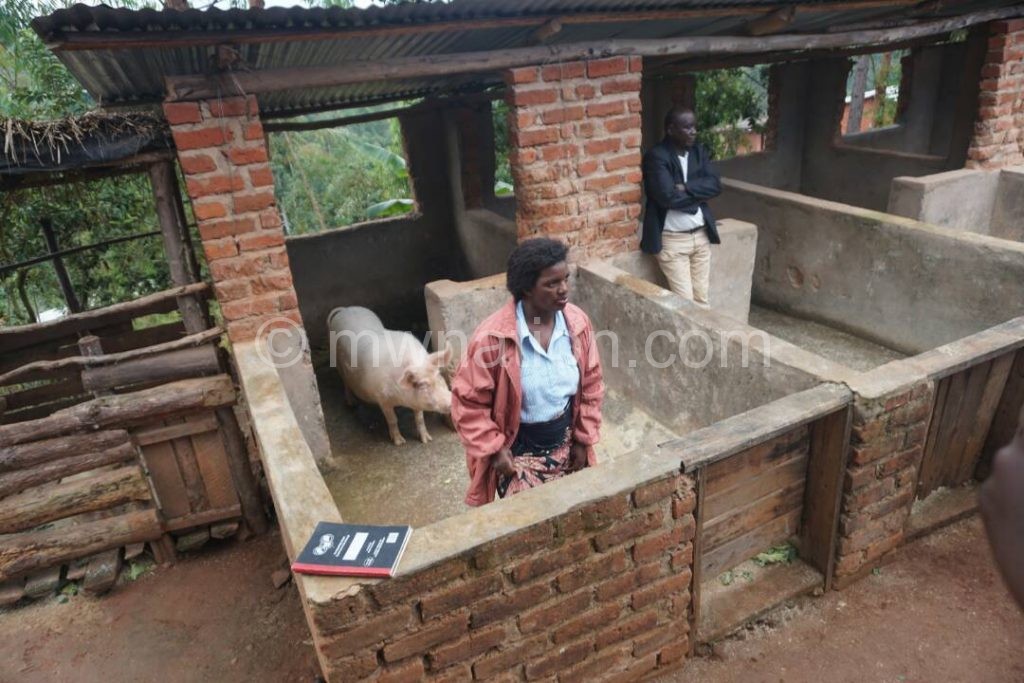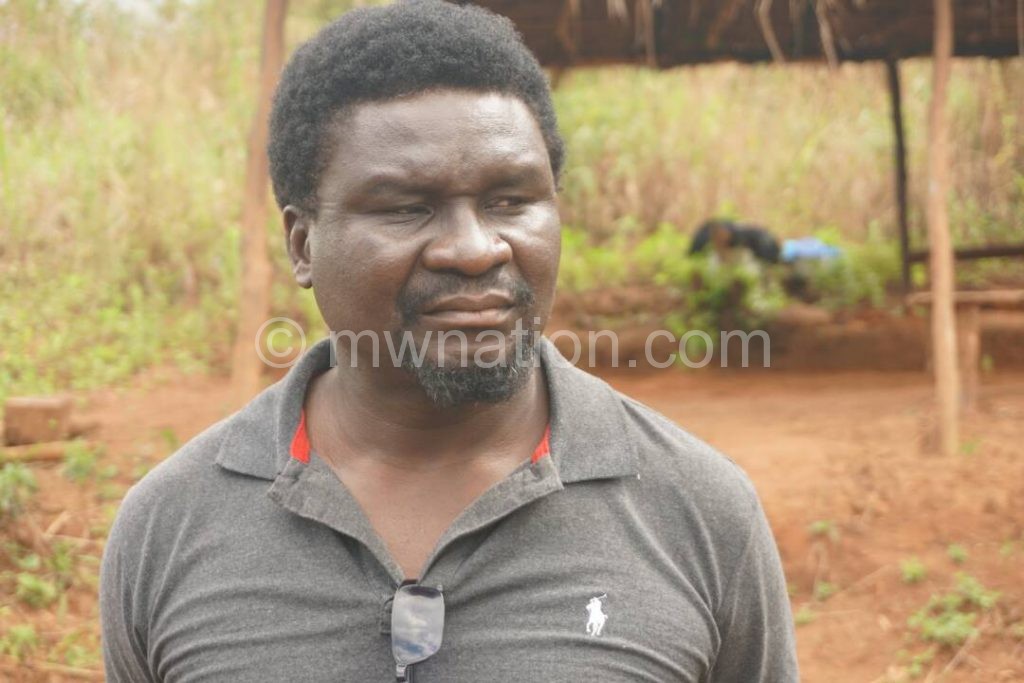Adapt or perish: Innovative solutions to changing climate
As countries transition toward climate-resilient sustainable development, the Department of Environmental Affairs in the Ministry of Natural Resources, Energy and Mining with support from United Nations Development Programme is assisting farmers to prepare for and build resilience to the impacts of climate change through Implementing urgent adaptation priorities through strengthened decentralised and national development plans or Adapt Plan. In the three case study districts of Nkhata Bay, Ntcheu and Zomba, the Adapt Plan project is transforming lives as our staff writer MOSES MICHAEL-PHIRI writes in this two-part series on climate change:

When she was conceived 43 years ago, her parents Moses and Joyce Nyirenda thought she was a boy. When she was born in the wee hours of October 6 1975 her father—disappointed and frustrated—went ahead to name her Samson despite her gender.
The name is from the Bible. Samson is the strongest man, who used his supernatural strength, to save Israel from the Philistines.
The modern day female Samson Nyirenda is doing the same in Nkhata Bay. Together with 11 other farmers they are saving their community from the effects of climate change through climate-resilient sustainable commercial projects.
For years, Nyirenda has heard about the disastrous effects of climate change, especially among poor communities such as hers in Kamuchibazi Village in the area of Traditional Authority Kabunduli in the district.
The mother of six never thought that her community could experience climate change effects because the village used to be surrounded by thick forests and is perched on a hilltop. Good rains are always guaranteed.
“We used to think that climate change would not affect us. We were used to growing banana and cassava in the mountain-side because we had good rains, year-in, year-out,” she explains during a visit to her areas.
But that was to change in 2015. That year, Nyirenda learned the hard way. Floods struck her village. The entire community lost most of the banana and cassava crop—the main food crops in mountainous Nkhata Bay. The devastating floods in the history of the nation killed 176 people nationwide and destroyed infrastructure facilities such as roads and railway rendering communication impossible in some areas.
The community in Kamuchibazi also lost most of the livestock: cattle, goats and chickens. Then a prolonged dry spell followed resulting in wilting of most of the crops due to lack of moisture.
“We experienced climate change first hand. We had to find other ways to survive,” Nyirenda recalls.
She says as small-scale subsistence farmers they had to figure out how to make a living from farming in the fields eroded by heavy rains.
“We had to fertilise washed-out areas, and we had to find ways to adapt as the flood was followed by a prolonged dry spell. We could not depend on agriculture alone anymore. It was going to be a long hard road to recovery,” she says.
So they decided to go into poultry and piggery to supplement their incomes.
Piggery was a big hit. The Large Whites breeds they bought were instant success.
“We got a financial injection of K200 000 from Comsip [a community savings and investments cooperative] to build a piggery and acquire Large Whites female pigs as the starting point to our farming to raise pigs,” narrates Nyirenda.
The Large Whites proved to be a rugged and hard breed that can withstand variations in climate and other environmental factors compared to local, scavenger breed.
Their ability to cross with and improve other breeds has given them a leading role in commercial pig production systems and breeding pyramids around the world. Large Whites also produce more pork.
The demand for pork in Malawi has soared over the years.
Pork now ranks as the Malawi’s second highest earner in the livestock sector traditionally dominated by cattle and goats, according to a 2008 livestock survey conducted by the Lilongwe University of Agriculture and Natural Resources (Luanar).
This makes pigs an important segment of agri-business. It contributes about seven percent of the gross domestic product (GDP) and about 20 percent of the value of total agricultural production, according to the Luanar survey.
“The pigs, apart from generating income when we sell some of them, they give manure—a replacement for fertiliser which is expensive at the moment, in this changing climate we use the rich manure from pigs to fertilise the nutrient deficient soils which helps grow our food at the moment,” Nyirenda explains.
According to the area veterinary officer Khumbanani Munyenyembe, livestock is an asset that has been helping in adaption process.
“The communities have broiler production and piggery to semi-commercial levels as a source of economic tool to raise funds to support households.
“The project is also promoting pass-on-programme so that the number of livestock ownership improves,” he says.
That sort of ingenuity in the face of hardship has launched Nyirenda and her cooperative Tikoleskane Poultry and Piggery Group on a journey that caught the attention of the Adapt Plan project who are now empowering them with skills and technical assistance.
The Adapt Plan through UNDP is supporting the government to address the challenges of climate change such as the one experienced by Kachibazi community in Nkhata Bay.

According to deputy director of Environmental Affairs Michael Makonombera, as countries transition toward climate-resilient sustainable development, the UNDP is assisting them to prepare for, and build resilience to, the impacts of climate change through the Adapt Plan.
He explains that the project was launched to mainstream climate change adaptation into development planning.
It is a five-year project with a budget of roughly $4.5 million.
“Despite significant political will and commitment to address climate change in Malawi, persistent barriers exist to the effective implementation of the policy and mainstreaming of adaptation into development planning,” Makonombera explains.
“These constraints include poor policy implementation, technical capacity challenges and knowledge gaps. These barriers are exacerbated by the multi-sectoral nature of climate change,” he adds.
Makonombera says in recognition of these areas, the project aims to establish and demonstrate the institutional framework required to mainstream adaptation into development planning at national and local levels, beginning with three line ministries—Agriculture, Water and Forestry—and three case study districts of Nkhata Bay, Ntcheu and Zomba.
He says, at least 5 800 people from the initial pilot districts are expected to benefit directly from practical training and support on resilient livelihood activities.
“Such activities include, but are not limited to, crop diversification, tree planting, development of fish ponds, earth dams and water harvesting,” says Makonombera.
He hopes the success stories recorded under the pilot phase will be replicated by other farmers or communities across the country.
“We cannot reach out to everyone due to resource constraints, but we hope that people can learn from these pilot sites, “says the deputy director.
If direct beneficiaries of these 5 800 people are included, the number rises sharply to 40 000 and a significant 600 000 if indirect beneficiaries are included.
For Nyirenda, she can’t ask for more.
“Challenges remain, but so far, the climate resilient and economic empowerment projects we are engaging in are paying dividends,” she says, smiling while another member of the group showcases health vegetables grown with manure from the piggery farming they are engaged in.
To them this is a community-based adaptation developed by indigenous people to address local problems such as nutrient deficient soils.





